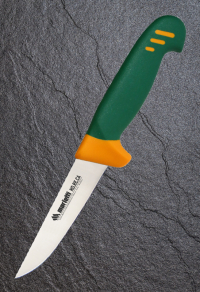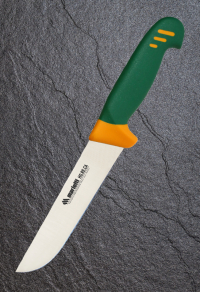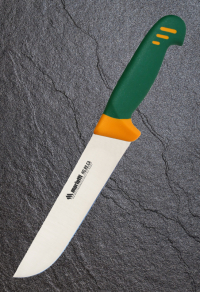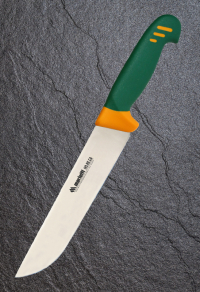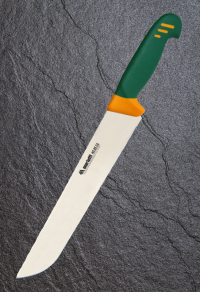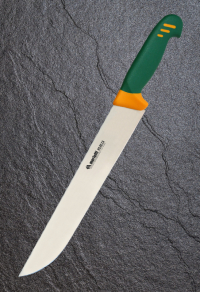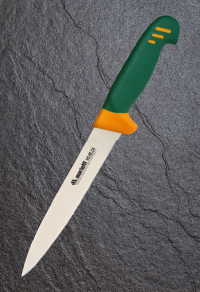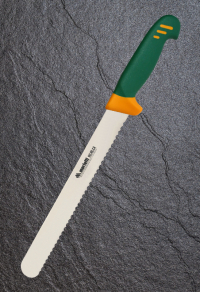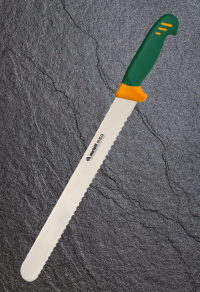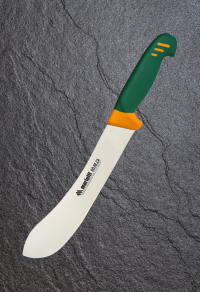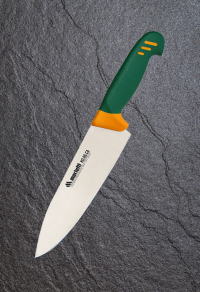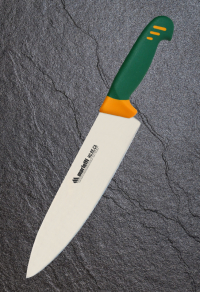
Professionale HO.RE.CA
Active filters
-
Knife FRANCESE 13 BUT13
Knife with a large and heavy blade, generally having a length between 15 and 30 cm with a specific curvature - near the tip - that allows precise cuts to be obtained. Used to cut all types of red meat. -
Knife FRANCESE 16 BUT16
Knife with a large and heavy blade, generally having a length between 15 and 30 cm with a specific curvature - near the tip - that allows precise cuts to be obtained. Used to cut all types of red meat. -
Knife FRANCESE 18 BUT18
Knife with a large and heavy blade, generally having a length between 15 and 30 cm with a specific curvature - near the tip - that allows precise cuts to be obtained. Used to cut all types of red meat. -
Knife FRANCESE 21 BUT21
Knife with a large and heavy blade, generally having a length between 15 and 30 cm with a specific curvature - near the tip - that allows precise cuts to be obtained. Used to cut all types of red meat. -
Knife FRANCESE 26 BUT26
Knife with a large and heavy blade, generally having a length between 15 and 30 cm with a specific curvature - near the tip - that allows precise cuts to be obtained. Used to cut all types of red meat.
-
Knife FRANCESE 31 BUT31
Knife with a large and heavy blade, generally having a length between 15 and 30 cm with a specific curvature - near the tip - that allows precise cuts to be obtained. Used to cut all types of red meat. -
Knife FILETTARE 18 FIL18
To "fillet" a thin and very well sharpened blade is needed, better if quite flexible. While it is being withdrawn, it is really necessary to have a flexible blade and let it slide without using excessive pressure. Type of knife and relative blade dedicated almost exclusively to the preparation of fish. Think of cleaning all medium and large fish, when you intend to remove the "pulp" from the spine.
-
Knife PANE 24 BRD24
Slicing bread precisely and serving beautiful slices is a daily action. In addition, cakes, casseroles, roulades and other savory or cheesy preparations require a precise cut without having to pressurize the food, and this blade facilitates cutting.The tip is not needed and the blade must be wavy so as to incise the crust slowly without breaking it. -
Knife PANE 31 BRD31
Slicing bread precisely and serving beautiful slices is a daily action. In addition, cakes, casseroles, roulades and other savory or cheesy preparations require a precise cut without having to pressurize the food, and this blade facilitates cutting.The tip is not needed and the blade must be wavy so as to incise the crust slowly without breaking it. -
Knife SCIMITARRA 21 SKN21
Knife used mainly in butchery for professional use. It is necessary to start cutting the pieces of meat. Its blade can reach up to 34 centimeters in length. The blade of the knife stretches to rise exponentially towards the tip, also equipped with thread and blade, thus helping the cutting operations. Used for domestic use to slice porchetta, suppressed and large pieces of meat. -
Knife TRINCIANTE 21 CHF21
This model of knife allows the most varied workings and is certainly the tool that spends the most time in the hands of a Western chef. It has always been the knife with which everything is more or less everything on the cutting board. Excellent for shape and size for cutting, chopping, dicing and generally slicing any type of food: meat, fish, vegetables, fruit and semi-rigid or rigid cheeses. When choosing a carving knife, always check to have the space on the cutting board to be able to use it without damaging the tip near other objects and bearing in mind the fact that you will often have to use it as a guillotine, keeping the tip close to the cutting board and moving the initial part of the blade. A valid alternative - for the professional - to the classic domestic crescent. -
Knife TRINCIANTE 26 CHF26
This model of knife allows the most varied workings and is certainly the tool that spends the most time in the hands of a Western chef. It has always been the knife with which everything is more or less everything on the cutting board. Excellent for shape and size for cutting, chopping, dicing and generally slicing any type of food: meat, fish, vegetables, fruit and semi-rigid or rigid cheeses. When choosing a carving knife, always check to have the space on the cutting board to be able to use it without damaging the tip near other objects and bearing in mind the fact that you will often have to use it as a guillotine, keeping the tip close to the cutting board and moving the initial part of the blade. A valid alternative - for the professional - to the classic domestic crescent.

